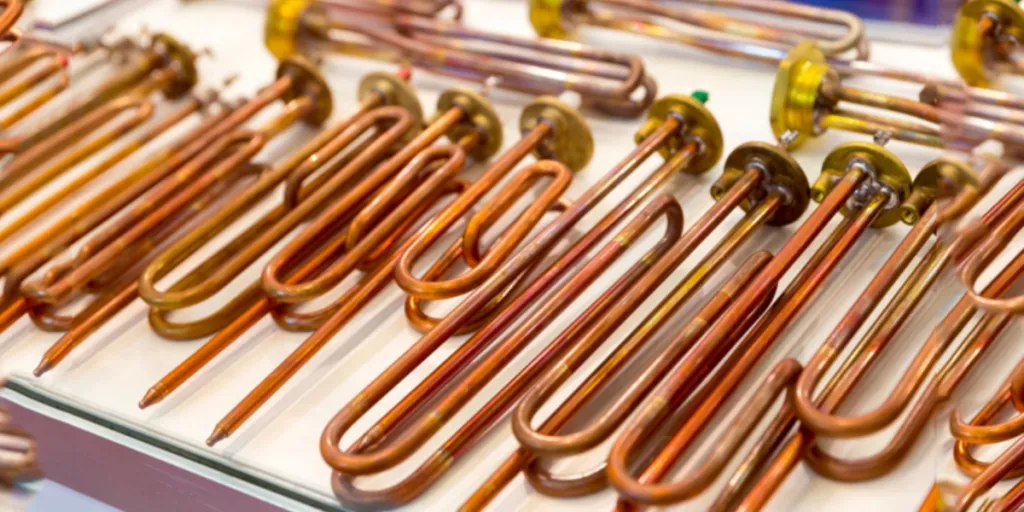As global energy efficiency initiatives continue to reshape industries, immersion heaters have emerged as a key player in the shift toward sustainable heating solutions. With the market expected to grow significantly, understanding the fundamentals of choosing the right immersion heater is crucial for businesses looking to make informed investments.
This article will explain everything businesses need to consider before choosing immersion water heaters for your buyers in 2025.
Table of Contents
How profitable is the immersion heater market?
How do immersion heaters work?
5 things to consider when choosing immersion water heaters
Rounding up
How profitable is the immersion heater market?
The immersion heater market reached a new industry size of USD 800 million in 2023. Experts predict the market will readjust to USD 1.5 billion by the end of 2036, growing at a 5% compound annual growth rate (CAGR). They also say the quick construction of smart cities and green building projects drive the immersion heater market.
Global government programs and legislation encouraging energy-efficient heating systems also increase demand for immersion heaters. By the end of 2036, North America (especially the U.S.) will account for the largest revenue share (about 33%).
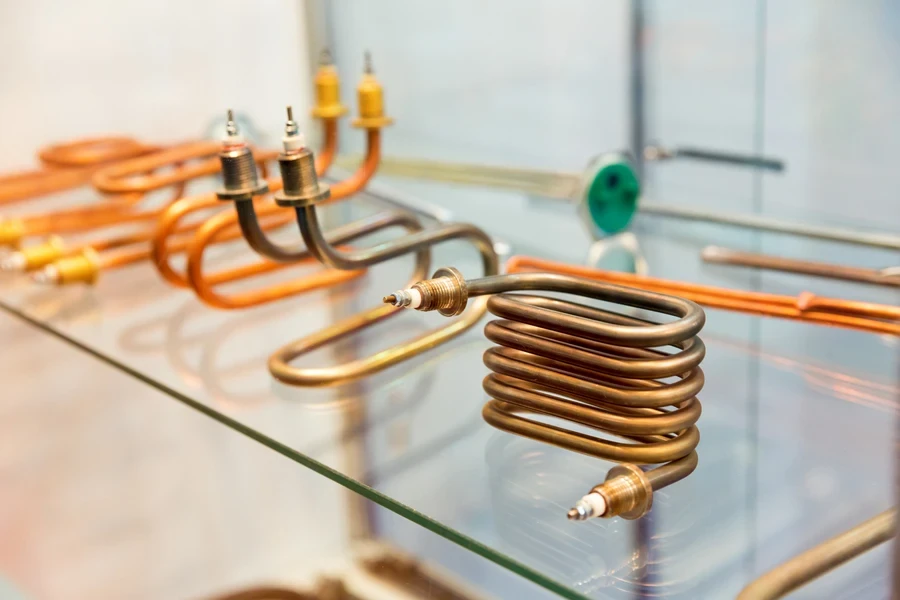
How do immersion heaters work?
Immersion (or bayonet) heaters are similar to electric kettles. But instead of heating enough water for tea, they warm water in large cylinders to provide a supply that can last for hours. They also work in more industrial settings to heat liquids stored in large tanks, pipes, or vats.
Immersion heaters can handle various liquids and gasses in different industries. These include water, oil, thick liquids, gasses, and hazardous chemicals. Since users fully submerge the heating elements, immersion heaters are nearly 100% efficient, making them more effective than steam or boiler systems.
Immersion heaters have electric heating elements inside a protective jacket. Once users insert the element in a tank, electricity flows through it, creating heat that spreads through the liquid. How long it takes to heat the liquid depends on the liquid, the heater’s power, insulation, and the materials used in the heating element.
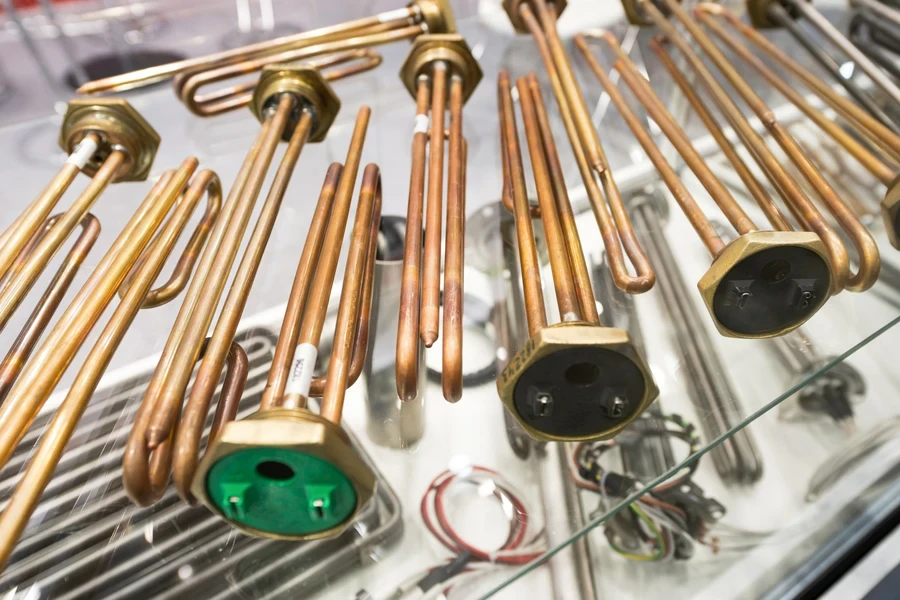
5 things to consider when choosing immersion water heaters
1. Type
First, immersion heaters come in several types, each serving a different purpose. Choosing the right one to sell depends on what the target customers want to heat and how they need to do it. Here’s a quick overview.
| Immersion heater type | Description |
| Screw plug heaters | These are compact heaters typically used in small tanks or vessels. Consumers can screw them into a threaded opening, and they are great for heating smaller volumes of liquid. |
| Flanged immersion heaters | For bigger jobs, consumers will go after flanged immersion heaters. They can bolt these heaters to the side of large tanks, making them more common in industrial settings like water treatment facilities or chemical plants. |
| Over-the-side heaters | Imagine a heater hanging over the side of a tank—easy to move and install. These heaters are perfect for applications where consumers don’t want or can’t put them directly inside the tank. Plus, they are versatile and widespread in temporary or mobile situations. |
| Circulation heaters | If consumers need a constant flow of heated liquid, circulation heaters are ideal. Water or other fluids can circulate through this system, making it great for industries that require precise temperature control. |
2. Material and construction
Another essential thing to consider is the material of the heater element and sheath. It can make a massive difference in terms of longevity and performance. So, retailers must consider their options based on what their target consumers want. Here’s a rundown of the common materials used in water immersion heaters.
| Heater material | Description |
| Stainless steel | This material is popular because it is tough and resistant to corrosion. For this reason, it’s great for heating clean water or certain industrial liquids. Stainless steel heaters are also durable and offer good value for most applications. |
| Copper | Copper is a highly conductive material that heats water quickly. It is more common in residential and light commercial heaters, where consumers fairly control water quality. |
| Incoloy | This nickel-based alloy can handle high temperatures and corrosive environments. However, they are better suited for more demanding industrial settings. |
| Titanium | Titanium is the gold standard for corrosion resistance. It’s more common in industries where harsh chemicals or water quality might corrode other materials. |
3. Energy efficiency
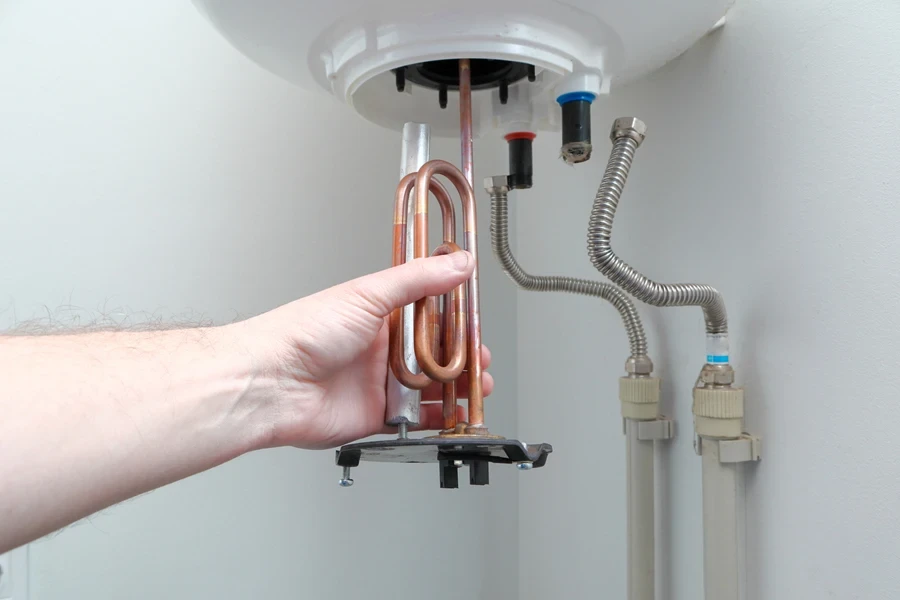
It’s no secret that energy costs are rising, and many customers are actively seeking energy-efficient solutions. So, if businesses want their immersion heaters to stand out, they should pay attention to this. Two things to focus on include wattage ratings and temperature controls/thermostats.
Heaters come in a range of wattage levels. Lower-wattage heaters are great for saving energy, but they heat water more slowly. High-wattage models heat larger volumes quickly but come with higher energy costs. Here’s a great tip: consider stocking a mix of wattages in the product line to cater to different customers.
Temperature control and thermostats are also equally important. Heaters with built-in temperature controls are more efficient and safer. They prevent overheating and reduce wasted energy by keeping water at a consistent temperature. They are also must-have features that require precise control over their water temperature.
4. Safety features
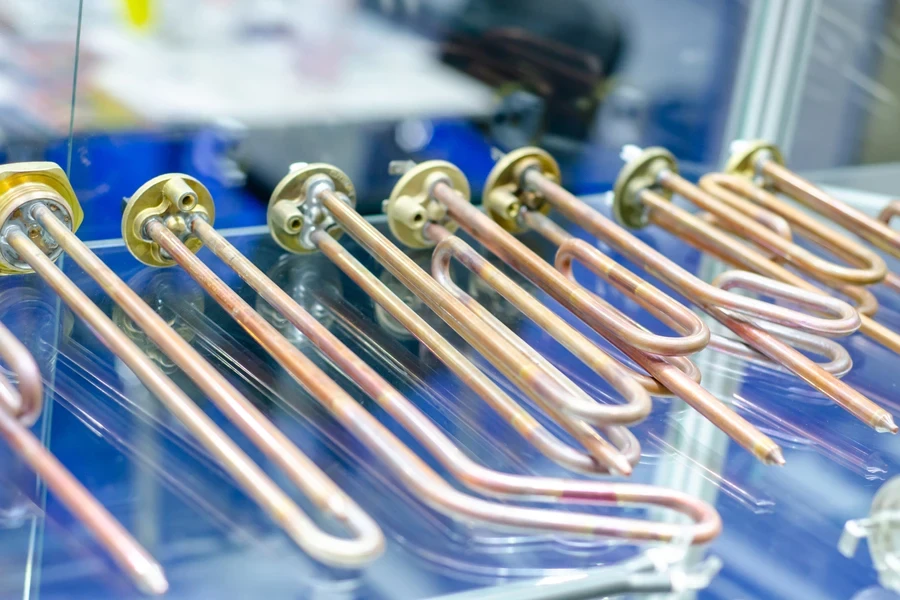
Safety is a top priority for customers, and it should be for businesses as well. Water immersion heaters can be dangerous if they don’t have the proper safety features. Here’s what retailers should look for:
- Over-temperature protection: Heaters that automatically shut off when they reach unsafe temperatures are much safer and can prevent costly damage to the equipment or fluid inside.
- Leak detection: A leak can be disastrous in industries that deal with sensitive or hazardous liquids. For this reason, some heaters come with built-in leak detection systems to alert users early and prevent any major issues.
- Explosion-proof designs: Some industries work in explosive environments (like oil and gas), making explosion-proof heaters a must-have. Manufacturers design them to contain any ignition sources, preventing them from coming into contact with hazardous materials.
Note: If retailers sell to industrial clients, especially those in high-risk environments, they must ensure their heaters meet the necessary safety standards. Hence, certifications like UL, CSA, or CE are worth checking out.
5. The target market
One of the most important things to consider is who the business is selling to. The type of immersion heater that works for a homeowner differs significantly from what’s needed in a chemical processing plant. Understanding the target market and their needs will help businesses stock the right products and ensure they speak their language.
So, if retailers are focusing on residential or small commercial customers, they will want to stick with screw plug heaters or basic models featuring copper or stainless steel. These customers typically seek something easy to install, affordable, and reliable.
On the other hand, industries like chemical processing, oil refineries, or food production will need more robust heaters. In this case, business buyers can go for flanged or circulation heaters made from corrosion-resistant materials like Incoloy or titanium.

Rounding up
Choosing suitable water immersion heaters to sell involves considering various factors, from the types and materials to safety features and market demand. By offering products that cater to the specific needs of target consumers, whether they are homeowners or industrial clients, retailers will be in a better position to succeed.
